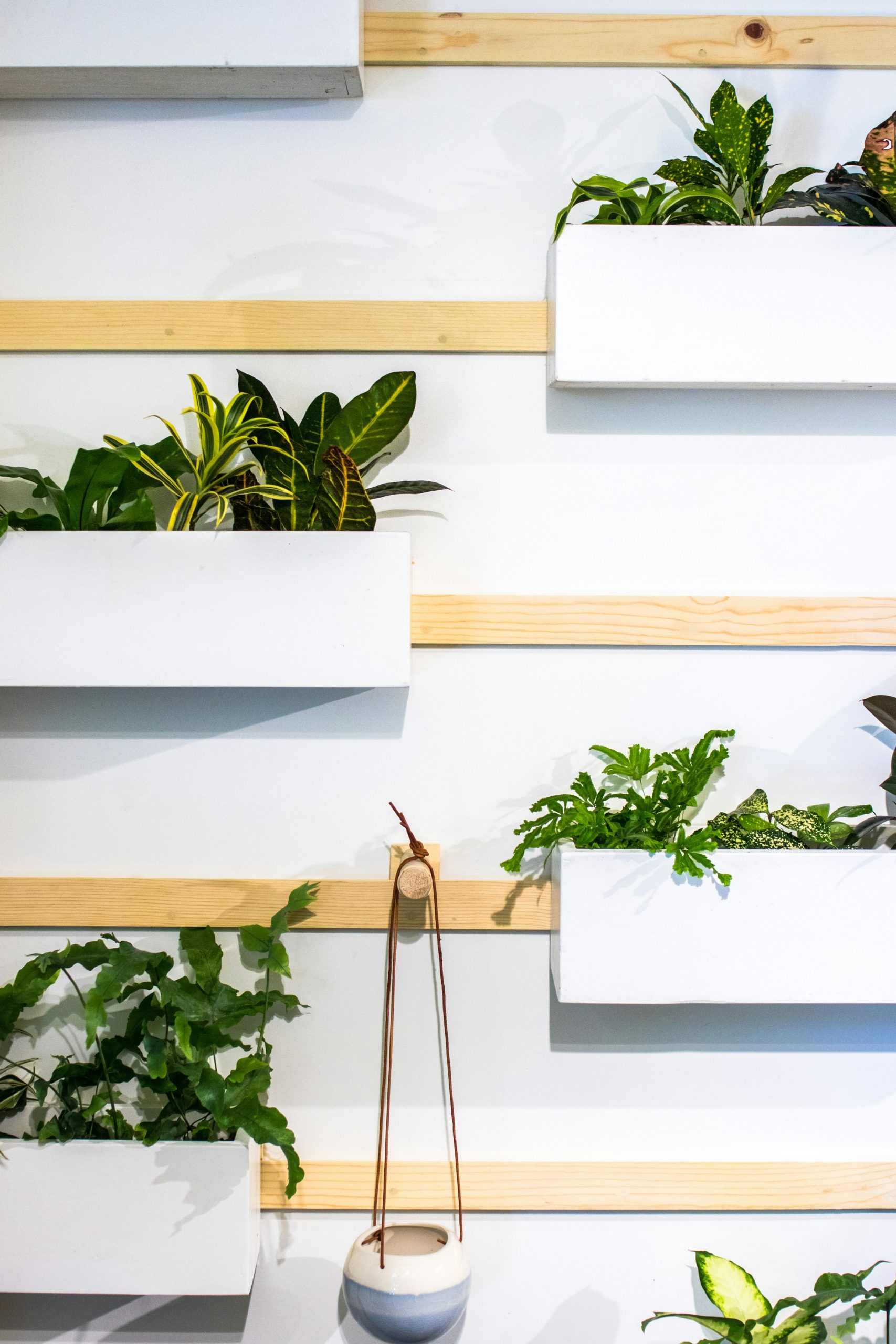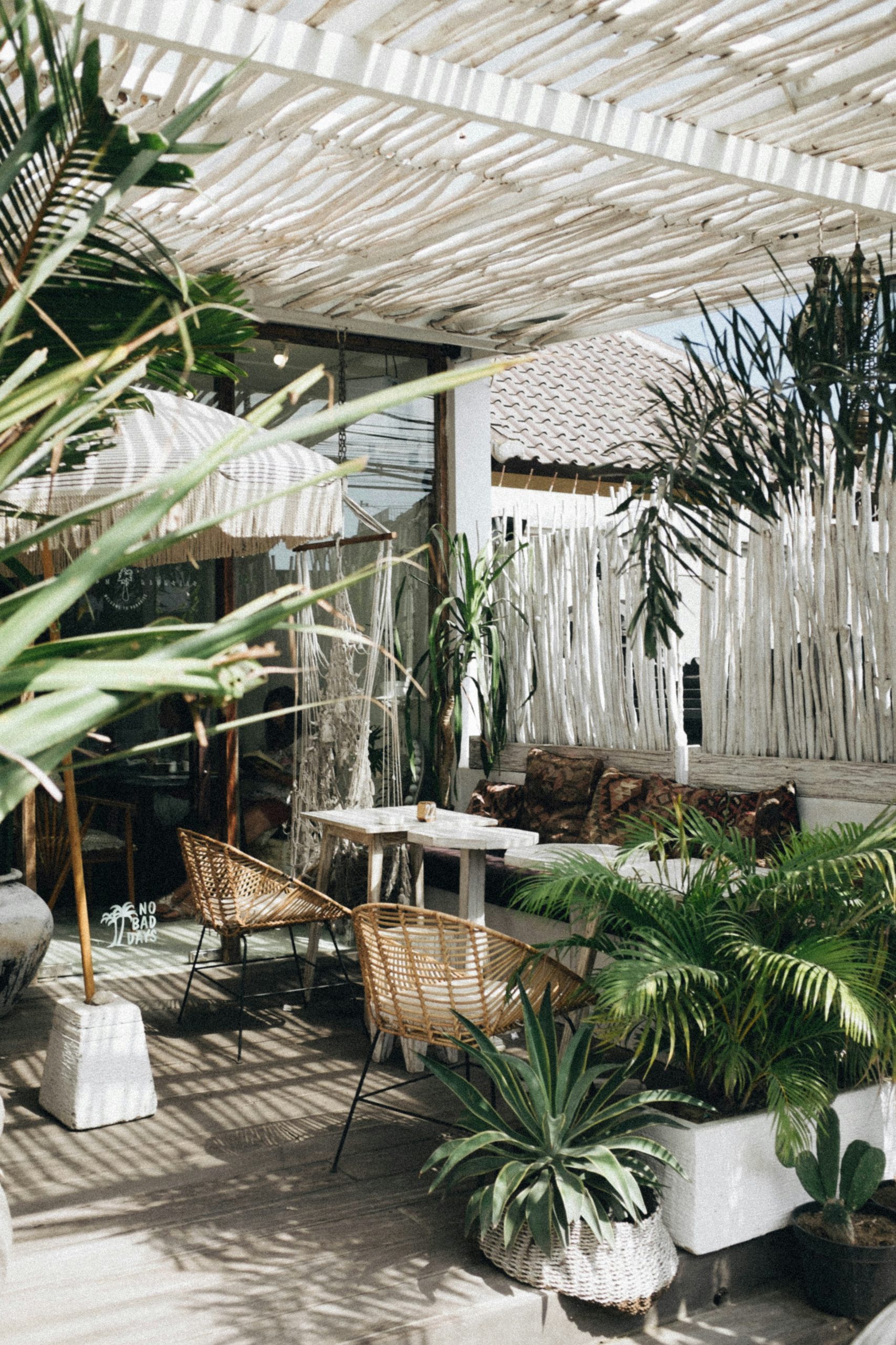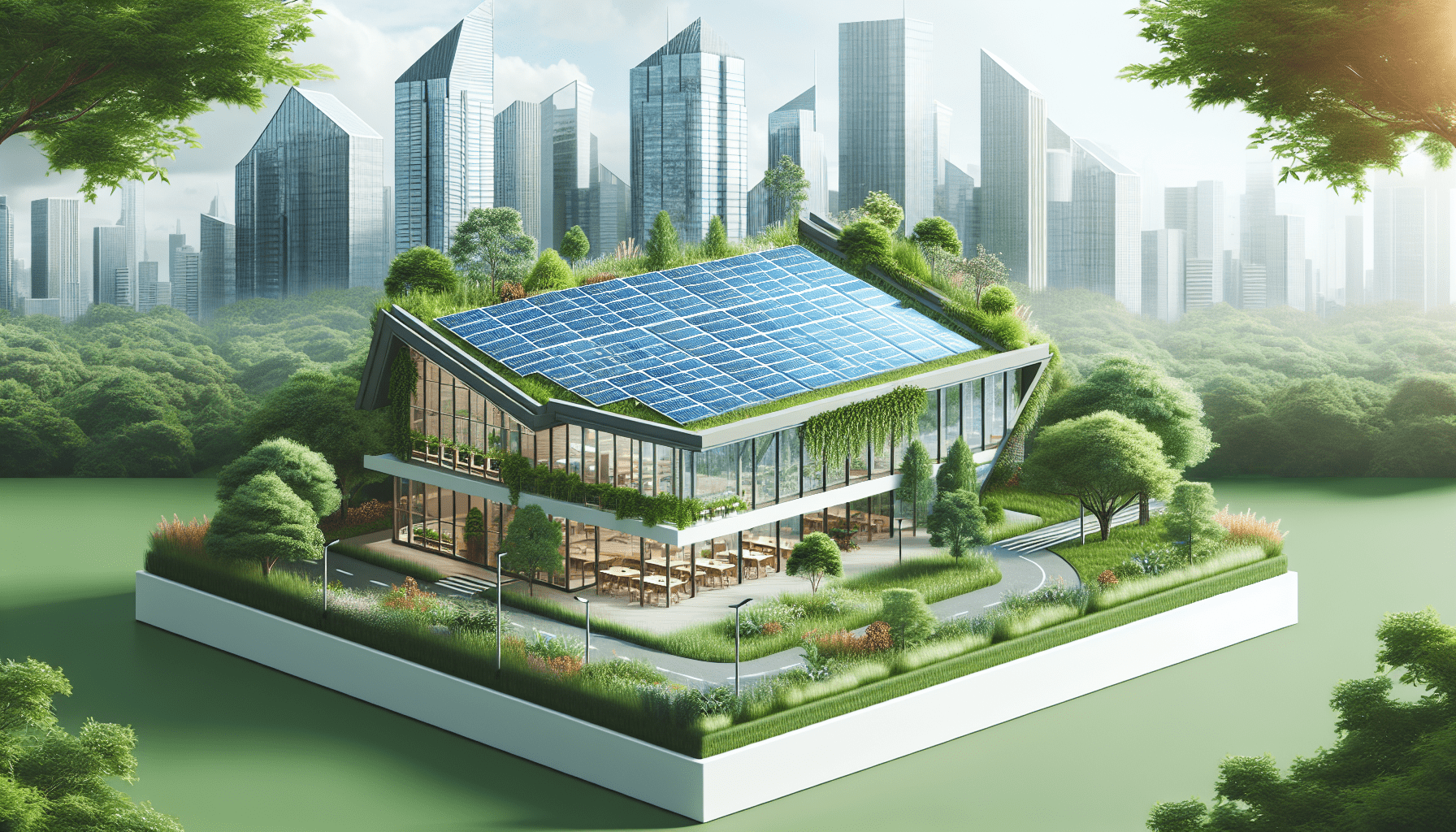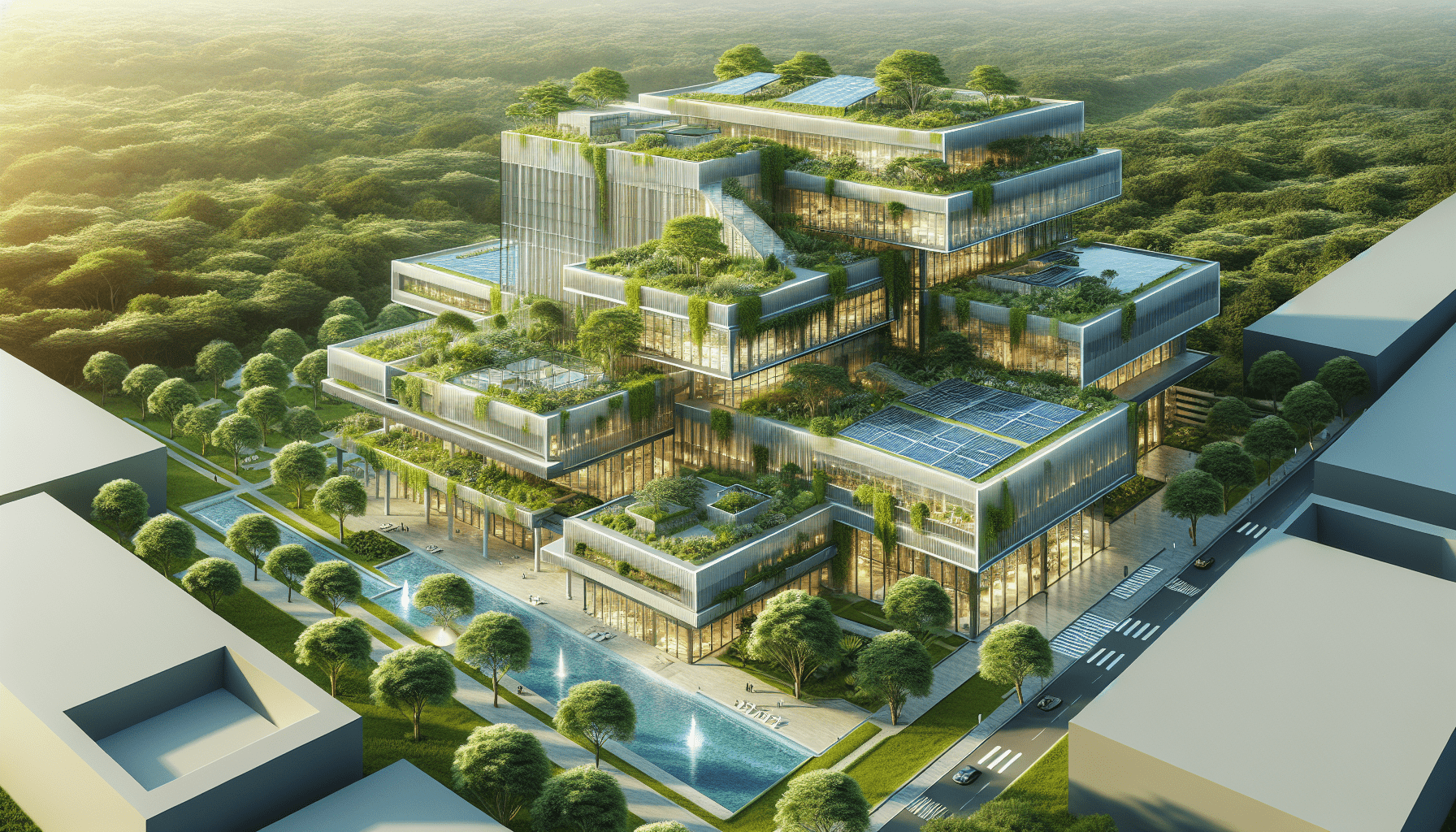Hey, let’s explore some cost-effective sustainable design solutions together! In this article, we delve into the world of eco-friendly design and discover ways we can implement sustainable practices without breaking the bank. From utilizing recycled materials to optimizing energy efficiency, we’ll uncover methods that not only benefit our planet but also our wallets. So, join us as we navigate the intersection of sustainability and affordability, and gather some actionable insights to make our homes and communities greener. Have you ever wondered how we can make our homes, offices, and public spaces more sustainable without breaking the bank? With the rising urgency to address climate change, many of us are looking for cost-effective, sustainable design solutions. Let’s dive into some practical and affordable strategies that will help us contribute to a greener planet while staying within budget.

Introduction to Sustainable Design
Sustainable design prioritizes minimizing environmental impact through thoughtful resource use and eco-friendly practices. It’s not just about high-tech solutions; often, it’s about making smart choices.
Why Sustainable Design Matters
Sustainable design is crucial because it reduces our carbon footprint, minimizes waste, and conserves natural resources. This approach ensures that we are living within our ecological means and leaving a healthier planet for future generations.
Cost-Effectiveness of Sustainable Design
One common misconception is that sustainability equates to high costs. However, many sustainable design solutions are highly cost-effective, often saving us money in the long run through lower energy bills, reduced maintenance costs, and increased productivity.
Energy Efficiency
Energy efficiency is a fundamental aspect of sustainable design. By reducing our energy consumption, we can significantly lower our environmental impact and save on utility bills.
Insulation and Weatherproofing
Insulation
Proper insulation is critical in maintaining our building’s temperature, reducing the need for excessive heating or cooling. Insulating our walls, roofs, and floors can help keep indoor conditions stable, leading to substantial energy savings.
Types of insulation:
| Type | Description | Cost | Benefits |
|---|---|---|---|
| Fiberglass | Composed of fine glass fibers | Low | Inexpensive, easy to install |
| Cellulose | Made from recycled paper products | Moderate | Eco-friendly, good R-value |
| Spray Foam | Sprayed into walls and cavities | High | Excellent air seal, effective insulation |
Weatherproofing
Weatherproofing involves sealing cracks and gaps to prevent air leaks. This can significantly improve our building’s energy efficiency by keeping conditioned air inside.
Simple weatherproofing tips:
- Use caulk and weatherstrips around doors and windows.
- Install door sweeps to close gaps at the bottom of doors.
- Apply window film to reduce heat loss during winter and heat gain during summer.
Energy-efficient Appliances and Lighting
Investing in energy-efficient appliances and lighting can drastically reduce our energy consumption.
Appliances
Energy Star-rated appliances are designed to use less energy compared to their conventional counterparts. When shopping for new appliances, look for the Energy Star label.
Common energy-efficient appliances:
| Appliance | Energy Savings (% compared to standard) |
|---|---|
| Refrigerator | Up to 15% |
| Washing Machine | Up to 25% |
| Dishwasher | Up to 12% |
Lighting
Switching to LED or CFL bulbs from incandescent bulbs can lead to significant savings on our electricity bills.
Lighting options:
| Type | Energy Use (Watts) | Lifespan (Hours) | Cost |
|---|---|---|---|
| Incandescent | 60 | 1,000 | Low |
| CFL | 14 | 8,000 | Moderate |
| LED | 10 | 25,000 | High |

Water Conservation
Water conservation is another vital component of sustainable design. By implementing water-efficient practices and systems, we can significantly lower our water usage and costs.
Low-flow Fixtures
Low-flow fixtures, such as faucets, showerheads, and toilets, use less water without compromising performance. These are easy to install and can make a big difference.
Examples of low-flow fixtures:
| Fixture | Water Use Reduction (%) |
|---|---|
| Faucet Aerators | Up to 30% |
| Low-flow Showerheads | Up to 50% |
| Dual-flush Toilets | Up to 20% |
Rainwater Harvesting
Rainwater harvesting involves collecting and storing rainwater for non-potable uses such as irrigation, toilet flushing, and even laundry. This reduces our dependency on municipal water supplies and lowers our water bills.
Advantages of rainwater harvesting:
- Reduces demand on mains water.
- Cuts down on water bills.
- Provides a sustainable, alternative water source during droughts.
Greywater Systems
Greywater systems recycle wastewater from baths, showers, and sinks for use in irrigation and toilet flushing. Implementing these systems can significantly reduce our overall water usage.
Benefits of greywater recycling:
- Reduces fresh water consumption.
- Lowers sewage output.
- Provides a reliable water source for irrigation.
Sustainable Materials
Using sustainable materials in construction and design helps reduce the demand for non-renewable resources and minimizes environmental impact.
Recycled and Upcycled Materials
Incorporating recycled and upcycled materials in our projects supports circular economies and reduces waste.
Common recycled materials:
| Material | Source |
|---|---|
| Recycled Steel | Scrap metal |
| Recycled Glass | Glass waste |
| Recycled Plastic | Plastic waste (e.g., bottles) |
Renewable Materials
Renewable materials are those that can be replenished naturally over short periods, making them more sustainable options.
Popular renewable materials:
| Material | Source | Benefits |
|---|---|---|
| Bamboo | Grass | Fast-growing, strong, versatile |
| Cork | Bark of cork oak tree | Renewable, naturally resilient |
| Reclaimed Wood | Salvaged from old structures | Reduces demand for virgin timber |
Non-toxic and Low VOC Materials
Using non-toxic and low Volatile Organic Compounds (VOC) materials improves indoor air quality and reduces health risks.
Healthy material choices:
- Low-VOC paints and finishes.
- Natural fiber carpets (e.g., wool, jute).
- Formaldehyde-free plywood.

Passive Solar Design
Passive solar design maximizes the use of natural sunlight and heat, reducing the need for artificial lighting and climate control.
Building Orientation
Orienting our building to take advantage of natural sunlight can help maintain a comfortable indoor environment.
Key orientation strategies:
- Position living areas to face south (in the Northern Hemisphere) to capture maximum sunlight.
- Use overhangs to block excessive summer sun while allowing winter sun to enter.
Thermal Mass
Thermal mass materials, such as concrete, brick, and stone, absorb and store heat during the day and release it at night, helping to stabilize indoor temperatures.
Benefits of thermal mass:
- Reduces heating and cooling needs.
- Enhances indoor comfort.
- Provides natural temperature regulation.
Green Roofing and Landscaping
Green roofing and landscaping can significantly reduce our environmental impact while enhancing the aesthetic appeal of our spaces.
Green Roofs
Green roofs, or living roofs, are partially or completely covered with vegetation, providing numerous environmental benefits.
Advantages of green roofs:
- Improved insulation.
- Reduced stormwater runoff.
- Enhanced urban biodiversity.
- Increased lifespan of roofing materials.
Native and Drought-tolerant Landscaping
Using native and drought-tolerant plants in landscaping reduces water consumption and maintenance needs while supporting local ecosystems.
Benefits of native and drought-tolerant plants:
- Lower water requirements.
- Minimal maintenance.
- Increased resistance to local pests and diseases.

Indoor Air Quality
Indoor air quality is crucial for our health and well-being. Sustainable design solutions can help improve the air we breathe indoors.
Natural Ventilation
Maximizing natural ventilation reduces our reliance on mechanical ventilation systems, saving energy and improving air quality.
Strategies for natural ventilation:
- Use operable windows and vents.
- Place windows strategically to promote cross-ventilation.
- Integrate chimney or stack vents to enhance airflow.
Air Purifying Plants
Certain indoor plants can filter and purify the air by removing pollutants and releasing oxygen.
Popular air purifying plants:
| Plant | Pollutants Removed |
|---|---|
| Spider Plant | Formaldehyde, xylene, toluene |
| Snake Plant | Benzene, formaldehyde, trichloroethylene |
| Peace Lily | Ammonia, benzene, formaldehyde |
Waste Reduction
Reducing waste through thoughtful design and habits minimizes our environmental footprint and conserves resources.
Deconstruction and Salvage
Instead of demolishing and discarding materials during renovations, we can deconstruct structures to salvage reusable materials. This approach reduces waste and saves money.
Materials commonly salvaged:
- Bricks and stones.
- Lumber.
- Fixtures and fittings.
Composting and Recycling
Implementing composting and recycling systems in our homes and offices helps divert waste from landfills and transforms it into useful products.
Benefits of composting and recycling:
- Reduces landfill waste.
- Produces nutrient-rich soil (composting).
- Conserves raw materials and energy (recycling).

Affordable Sustainable Solutions for Different Spaces
Whether we’re redesigning a home, office, or public space, there are numerous cost-effective sustainable solutions available.
Sustainable Solutions for Homes
Energy-efficient upgrades:
- Install programmable thermostats.
- Replace old windows with double-glazed units.
- Use window treatments to enhance insulation.
Water-saving measures:
- Fix leaks promptly.
- Install low-flow fixtures.
- Use rain barrels for garden irrigation.
Sustainable materials:
- Opt for bamboo or cork flooring.
- Use recycled glass or concrete countertops.
- Choose reclaimed wood for furniture.
Sustainable Solutions for Offices
Energy conservation:
- Implement an energy management system.
- Encourage the use of natural light with open spaces and glass partitions.
- Upgrade to energy-efficient lighting and appliances.
Water management:
- Install motion sensor faucets.
- Use waterless urinals.
- Educate employees on water-saving practices.
Indoor air quality:
- Incorporate air-purifying plants.
- Use low-VOC paints and finishes.
- Ensure adequate ventilation.
Sustainable Solutions for Public Spaces
Energy and water efficiency:
- Use solar lighting for outdoor spaces.
- Install smart irrigation systems.
- Utilize permeable paving for stormwater management.
Green infrastructure:
- Develop community gardens.
- Implement green roofs on public buildings.
- Plant native trees and shrubs.
Waste management:
- Provide recycling and composting bins.
- Organize community clean-up events.
- Educate the public on sustainable practices.
Integrating Technology for Sustainable Design
Incorporating technology can further enhance the effectiveness of our sustainable design solutions.
Smart Home Devices
Smart home devices can monitor and control energy use, helping us optimize our resource consumption.
Popular smart home devices:
| Device | Function |
|---|---|
| Smart Thermostat | Adjusts heating and cooling efficiently |
| Smart Light Bulbs | Remote control and scheduling |
| Energy Monitor | Tracks energy usage in real-time |
Building Management Systems (BMS)
Building Management Systems (BMS) integrate various building functions, such as HVAC, lighting, and security, to optimize performance and efficiency.
Benefits of BMS:
- Centralized control.
- Improved energy efficiency.
- Enhanced occupant comfort.
Renewable Energy Systems
Installing renewable energy systems, such as solar panels or wind turbines, can generate clean energy and reduce our reliance on fossil fuels.
Types of renewable energy systems:
| System | Energy Source | Cost | Benefits |
|---|---|---|---|
| Solar Panels | Sunlight | Moderate to High | Reduces electricity bills |
| Wind Turbines | Wind | High | Suitable for high-wind areas |
| Geothermal | Earth’s heat | High | Consistent energy supply |
Conclusion
Sustainable design doesn’t have to be expensive or complicated. By making informed choices about energy efficiency, water conservation, materials, and waste reduction, we can create spaces that are both eco-friendly and budget-conscious. Whether through small adjustments or larger projects, every step we take towards sustainability counts. Let’s embrace these cost-effective solutions and contribute to a greener, healthier planet for ourselves and future generations.
We hope this comprehensive guide has inspired you to consider sustainable design solutions for your next project. Together, we can make sustainable living accessible and achievable for everyone.